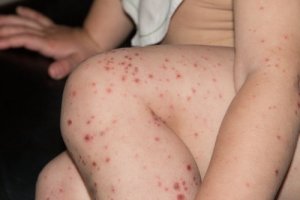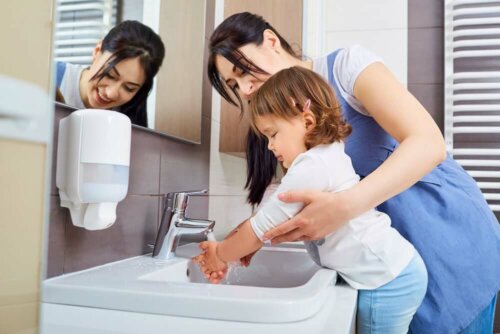Coxsackievirus: How it Affects Adults and Preventive Measures

Coxsackievirus exists on all the continents in the world and can infect both children and adults. Its name comes from New York City, where it was first isolated and officially investigated.
In places with a more tropical climate, coxsackievirus can show up at virtually any time of the year. In places with a traditional four-season year, the virus is most likely to appear during spring and autumn.
Below, we’ll tell you a little more about this virus and what you can do to protect yourself from it.
What’s coxsackievirus?
Coxsackievirus is also known as the hand-foot-mouth disease. The main symptoms of this virus usually appear in the extremeties and throat.
The nasty virus belongs to the enterovirus genus. This genus infects humans and causes a wide variety of diseases like poliomyelitis, hepatitis A, and many more.
Even though it exists among demographics of all ages, coxsackievirus mainly affects children younger than twelve.
There are two different types of the virus. The first is virus type A, and the second, virus type B. These two types exhibit symptoms that are practically identical to each other. Discover more below.
What are the main symptoms of coxsackievirus?

- Nausea
- Headaches
- Abdominal pain
- Loss of appetite
- Throat pain and irritation
- Fevers higher than 100.4 degrees Fahrenheit (38 degrees Celsius)
There are also some other symptoms specific to coxsackievirus, such as:
- The formation of small blisters on the feet and hands that, in general, are very sensitive to touch.
- The formation of blisters in the throat, the roof of the mouth, and inside of the cheeks. There will also be a redness that spreads just around the blisters.
- Irritation of the sclera (white membrane that covers the eye) that causes photosensitivity and swelling.
You might like: What Does Viral Load Mean?
How do you get coxsackievirus?

You can come into contact with the virus in almost any environment. It’s a virus you mainly contract by inhaling it into any one of your respiratory airways. However, there are also some other ways you might get it, such as:
- Touching your mucous membranes (eyes, nose, or mouth), after being in contact with a contaminated surface.
- Having direct contact with the mucous membranes of an infected person.
- Having direct contact with the feces of an infected person.
- Direct contact with the fluids secreted by the blisters of an infected person.
This virus is capable of staying alive on surfaces for up to three days. A child is more likely to be exposed to the virus in a daycare or in school.
In addition, the incubation period of the virus in the body can span from three to seven days. You won’t know you have the virus until that time passes.
Coxsackievirus treatment and prevention

There’s no cure or specific treatment for the sickness. With time, your body will naturally defend itself and fight it off.
Although the symptoms should disappear within seven days, some medicines can reduce its incidence. It’s also believed that some natural remedies could help improve the condition. However, we recommend you consult with your doctor about the most appropriate treatment for your case.
Medicines for coxsackievirus
You can get drugs such as paracetamol or ibuprofen over-the-counter at any pharmacy. However, it’s very important for a doctor to diagnose and prescribe the appropriate treatment and dose.
You should also read: The Effects of Paracetamol on Personality
Homemade treatments to relieve some of its symptoms
You can try the following to relieve some of the symptoms of this condition if your doctor gives you the okay:
- To bring down the fever, you can use can soak a towel in lukewarm water and lay it over the head, hands, and/or feet.
- Taking chamomile baths will help to diminish hives and blisters on the skin.
- Drinking enough water will help your body stay hydrated and effectively fight the virus.
Coxsackievirus prevention

It’s very important to avoid contact with infected people, wash your hands properly, and, in the case of babies, take all possible hygiene measures when changing their diaper. The person diagnosed with this virus must be responsible for not infecting more people.The best way to reduce the risk of Coxsackie virus is to teach children basic hygiene measures and apply them yourself.
All cited sources were thoroughly reviewed by our team to ensure their quality, reliability, currency, and validity. The bibliography of this article was considered reliable and of academic or scientific accuracy.
- California Childcare Health Program. UCSF School of Nursing. Enfermedad De Mano-Pie-Boca (Enterovirus Coxsackie A16). cchp.ucsf.edu/sites/cchp.ucsf.edu/files/HandFootMouth_SP_0509.pdf
- Martínez Estrada V. Et Al. Rev Cent Dermatol Pascua. Vol. 8, Núm. 1. Enfermedad mano-pie-boca. (1999).
- CARPENTER, C. M., & BOAK, R. A. (1952). Coxsackie viruses; a review of pathologic, epidemiologic, diagnostic and etiologic observations. California medicine, 77(2), 127–130
- Guerra AM, Waseem M. Hand Foot And Mouth Disease. [Updated 2019 Dec 23]. In: StatPearls [Internet]. Treasure Island (FL): StatPearls Publishing; 2020 Jan-. Available from: https://www.ncbi.nlm.nih.gov/books/NBK431082/
- Zhang S, Zhi C, Li H, et al. Umifenovir effectively inhibits IL-10 dependent persistent Coxsackie B4 virus infection. Antiviral Res. 2017;141:165‐173. doi:10.1016/j.antiviral.2017.02.018
This text is provided for informational purposes only and does not replace consultation with a professional. If in doubt, consult your specialist.








